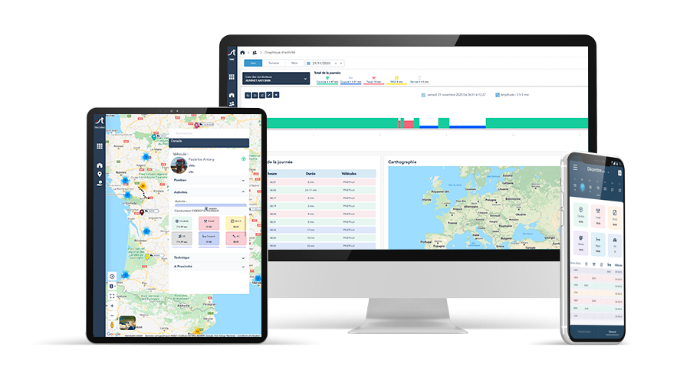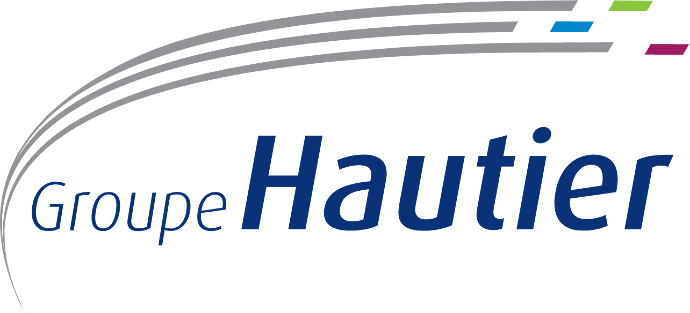Un monde de solutions,
pour optimiser votre activité transport !
DÉCOUVREZ LE MONDE DE SOLUTIONS STRADA
Strada, éditeur de logiciels de transport depuis plus de 30 ans, propose des solutions visant à améliorer, optimiser, piloter votre activité de transport.
Nos solutions offrent une maitrise totale de vos opérations de la planification à la gestion des ressources et contribuent à développer votre exploitation. Découvrez les diverses solutions informatiques de transport permettant de simplifier vos prises de décisions, d’accéder à des données en temps réel, de répondre aux obligations légales et sociales... Des outils simplifiant le quotidien de vos équipes : conducteurs, exploitants, dirigeants !

VALORISEZ VOS DONNÉES SOCIALES
Assurez la conformité de vos données sociales et véhicules grâce à notre solution : gestion des heures des conducteurs (temps de conduite, travail, mise à disposition, temps de coupure...), lecture des données tachygraphes, gestion des infractions...
Des solutions embarquées existent pour apporter sécurité et confort tant pour le conducteur que pour l’exploitant.
SUIVEZ VOTRE FLOTTE EN TEMPS RÉEL
Optimisez votre gestion de flotte de camions, assurant un suivi en temps réel et une gestion instantanée des données véhicules et conducteurs. Maximisez votre efficacité avec notre solution qui centralise toutes vos données : géolocalisation des camions et des conducteurs, historique des déplacements et des vitesses, suivi du temps de travail, suivi des consommations, pressions des pneumatiques, enregistrement des températures et de différents capteurs, rapport d'éco-conduite...
Des Dashboard clairs avec vos données pour une lecture rapide.

PILOTEZ VOTRE ACTIVITÉ TRANSPORT
Augmentez votre productivité via notre logiciel de gestion des transports – TMS. Gérez la planification, la saisie des commandes, l’organisation des tournées, l’affectation des missions, la facturation... Une solution complète et fiable, avec des données centralisées, pour piloter au mieux votre quotidien.
Exploitant, automatisez vos tâches et centralisez toutes vos actions pour gagner en performance !

MAÎTRISEZ LES COUTS DE VOS VÉHICULES
Analyser et suivez la maintenance de vos camions, via notre solution informatique dédiée. Gérez toutes vos actions mécaniques réalisées sur votre flotte (vidanges, entretiens, changement de pièce...) et centralisez la gestion de vos stocks.

COMMUNIQUEZ AVEC VOS CONDUCTEURS
Communiquez simplement avec vos conducteurs via une application mobile : Strada Pilot ! Véritable interface avec vos conducteurs, ils retrouvent en temps réel leurs missions à effectuer, leurs activités quotidiennes, leurs données de conduites et tous vos échanges.
Une application utile également pour dématérialiser vos process avec la gestion de l’E-CMR notamment.

GÉREZ VOTRE PARC DE VÉHICULES VU - VUL AVEC VULi
Nouveauté Strada ! Découvrez VULi, le nouveau boitier OBD auto-configurable pour gérer votre flotte de véhicules. Vous avez une flotte d'entreprise comprenant des véhicules utilitaires (VU),des véhicules utilitaires légers (VUL) ou des véhicules légers (VL) ?
VULi vous offre une solution embarquée auto-configurable pour gérer efficacement votre flotte. Avec VULi, 1 clic & c'est fini !
STRADAWORLD,
La plateforme SaaS !
Bienvenue dans le monde de Stradaworld !
Un univers proposant des solutions en ligne qui connecte les conducteurs, les véhicules à l’exploitation et à la direction. Une solution en mode SaaS offrant un accès sécurisé à toutes les informations essentielles.
Gérez vos opérations de la planification à la gestion des ressources, prenez des décisions éclairées n'importe où, n'importe quand, sur n'importe quel support. StradaWorld simplifie votre quotidien, avec un accès immédiat et en temps réel aux informations clés ! Une technologie puissante, une solution complète pour centraliser et gérer toutes vos opérations via une seule plateforme.
Propulsez votre activité vers le succès !

STRADA, UNE ÉQUIPE DE PROFESSIONNELS FRANÇAIS
POUR RÉPONDRE AUX BESOINS DES TRANSPORTEURS
Strada Support, notre service client pour gérer votre quotidien !
Implanté à Bressuire (79), notre service client, composé d’une équipe de 10 experts, assure un accompagnement quotidien auprès de nos clients. Disponibles, réactifs et à l’écoute, nos techniciens sont les interlocuteurs privilégiés, guidant nos clients dans l’utilisation optimale de leurs solutions. Le Strada Support, un SAV 100% français, garantit une qualité de service tout en respectant le cadre législatif lié aux activités de transport.
Une équipe de développeur web, le coeur de notre activité !
Au cœur de notre entreprise, notre équipe de développeurs web incarne l'essence même de notre expertise en tant qu'éditeur de logiciel de transport. Fiers de notre savoir-faire français, nos experts maîtrisent diverses compétences, du code HTML à l'architecture, en passant par les tests qualité. Ils imaginent et conçoivent chaque solution métier, garantissant ainsi des logiciels efficaces. Découvrez comment notre équipe façonne l'avenir de la technologie dans le secteur du transport.
Des experts métiers français, issus du monde du transport !
Avec une véritable expertise métiers, notre équipe “Métiers” assure que nos solutions répondent parfaitement aux besoins spécifiques de nos clients. Couvrant les domaines de la géolocalisation, de la gestion des données légales et véhicules, le suivi des missions, la planification... nos 5 experts sont à disposition de nos clients pour aller en profondeur dans nos solutions. Leur expertise sectorielle associée à la compréhension approfondie des défis du transport, assure ainsi que nos solutions sont à la hauteur des attentes clients.
30 ans d'existence et de savoir-faire !
Fort de plus de 30 ans d'expérience en tant qu'éditeur de logiciel, Strada s'est forgé une réputation solide dans le monde du transport. Notre savoir-faire reconnu nous permet d'offrir des solutions informatiques essentielles, performantes aux transporteurs. Plaçant nos clients au cœur de nos priorités, nous facilitons l'accès aux informations cruciales, permettant à chacun de prendre des décisions stratégiques rapidement. Notre volonté, être le partenaire des transporteurs en France et en Europe !





